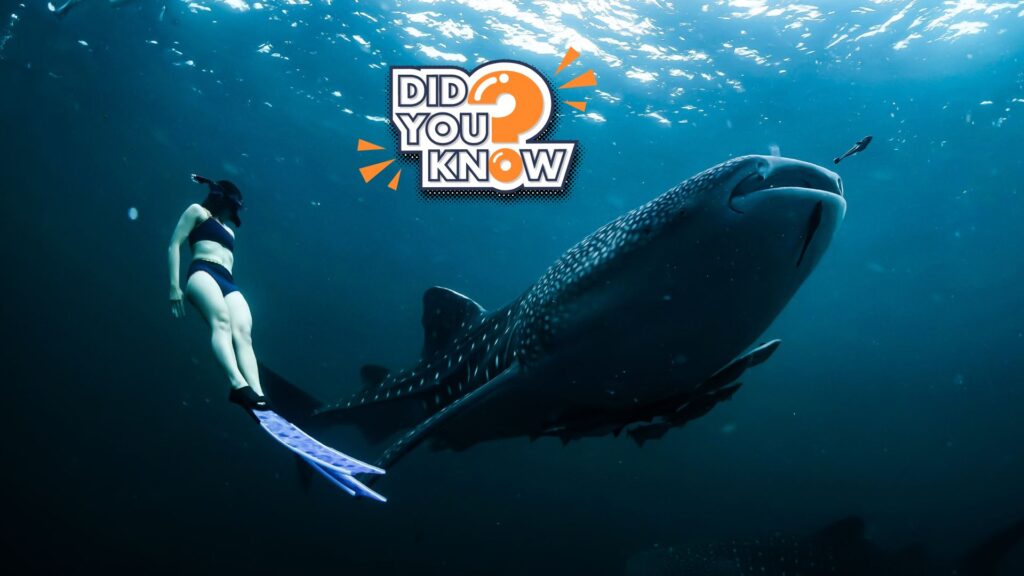Are you ready to dive into the interesting world of sharks and amaze your friends with your knowledge?
Many struggle to find engaging and unique trivia questions that capture their audience’s attention. It’s frustrating when you want to impress others with your shark expertise but don’t have the right questions to ask.
Get ready to sink your teeth into this collection of 111+ ultimate shark trivia questions guaranteed to make a splash!
From jaw-dropping facts about shark species to incredible insights into their behavior and habitat, you’ll find everything you need to become the go-to shark expert in your circle.
Whether you’re a shark enthusiast or simply looking to add excitement to your next trivia night, this blog post covers you.
Top Shark Trivia Questions & Answers

-
What is the largest species of shark?
A: The whale shark -
How many species of sharks are there?
A: Over 500 species -
What is the smallest species of shark?
A: The dwarf lantern shark -
Which shark species is known for its long migration patterns?
A: The great white shark -
What is the maximum recorded length of a great white shark?
A: 20 feet (6.1 meters) -
How long have sharks existed on Earth?
A: For over 400 million years -
Which shark species is known as the “tiger of the sea”?
A: The tiger shark -
What is the largest cold-water shark species?
A: The Greenland shark -
How many rows of teeth do most shark species have?
A: Multiple rows, usually five to seven -
Which shark species is known for its unique hammer-shaped head?
A: The hammerhead shark -
What is the primary sense sharks use to detect prey?
A: Their sense of smell -
Which shark species is known for its ability to walk on the ocean floor using its fins?
A: The epaulette shark -
What is the primary component of a shark’s skeleton?
A: Cartilage -
Which shark species is known for its elongated, blade-like snout?
A: The goblin shark -
How do sharks maintain buoyancy in the water?
A: By using their large, oil-filled liver -
Which shark species is known for its ability to produce bioluminescence?
A: The cookiecutter shark -
What is the maximum recorded depth reached by a shark?
A: 12,100 feet (3,700 meters) by a Portuguese dogfish -
Which shark species is known for its unique spiral-shaped egg cases?
A: The Port Jackson shark -
What is the largest species of hammerhead shark?
A: The great hammerhead shark -
Which shark species is known for its ability to survive in freshwater environments?
A: The bull shark -
What is the average lifespan of a shark?
A: It varies by species, but some can live up to 100 years or more -
Which shark species is known for its unique, circular jaw structure?
A: The whorl-toothed shark -
What is the primary diet of most shark species?
A: Fish, squid, and other marine animals -
Which shark species is known for its ability to produce an electrical field for hunting?
A: The Atlantic torpedo -
What is the maximum recorded speed of a shark?
A: 31 miles per hour (50 kilometers per hour) by a shortfin mako shark -
Which shark species is known for its ability to clone itself through parthenogenesis?
A: The bonnethead shark -
What is the largest species of mackerel shark?
A: The basking shark -
Which shark species is known for its unique, eel-like appearance?
A: The frilled shark -
What is the maximum recorded weight of a shark?
A: 47,000 pounds (21,500 kilograms) for a whale shark -
Which shark species is known for its ability to produce a venomous bite that can cause extreme pain?
A: The cookiecutter shark -
What is the primary method sharks use to locate prey in murky water?
A: Electroreception -
Which shark species is known for its unique, circular saw-like teeth?
A: The crabeater shark -
What is the maximum recorded lifespan of a Greenland shark?
A: Estimated to be over 400 years -
Which shark species is known for its ability to “walk” on land for short distances?
A: The bamboo shark -
What is the primary threat to shark populations worldwide?
A: Overfishing and habitat destruction -
Which shark species is known for its unique, thresher-like tail?
A: The thresher shark -
What is the maximum recorded depth reached by a megamouth shark?
A: 15,000 feet (4,600 meters) -
Which shark species is known for its ability to produce low-frequency sounds for communication?
A: The swell shark -
What is the primary method sharks use to maintain a constant body temperature?
A: Some species, like the great white shark, can maintain higher body temperatures through a heat exchange system called a rete mirabile -
Which shark species is known for its unique, horn-like protrusions above its eyes?
A: The horn shark -
What is a shark’s maximum recorded brain size relative to its body size?
A: The spiny dogfish has a brain that makes up about 1.5% of its total body weight -
Which shark species is known for its ability to produce a venomous bite?
A: The wobbegong shark -
What is the primary method sharks use to detect changes in water pressure?
A: The lateral line system -
Which shark species is known for its unique, tasseled appearance?
A: The tasseled wobbegong -
What is the maximum recorded number of pups in a single shark litter?
A: The blue shark can give birth to up to 135 pups in a single litter -
Which shark species is known for its ability to produce a bioluminescent fluid?
A: The velvet belly lantern shark -
What is the primary method sharks use to rid their bodies of parasites?
A: Some shark species visit cleaning stations where smaller fish remove parasites from their skin -
Which shark species is known for its unique, wing-like fins?
A: The ornate wobbegong -
What is the maximum recorded distance traveled by a tagged great white shark?
A: 12,400 miles (20,000 kilometers) from South Africa to Australia and back -
Which shark species is known for its ability to produce a bioluminescent lure to attract prey?
A: The longnose pygmy shark -
What is the primary method sharks use to navigate during long-distance migrations?
A: Magnetic fields and water temperature gradients -
Which shark species is known for its unique, frond-like gills?
A: The frilled shark -
What is the maximum recorded depth reached by a longnose catshark?
A: 6,000 feet (1,830 meters) -
Which shark species is known for its ability to produce a venomous spine on its dorsal fin?
A: The horn shark -
What is the primary method sharks use to communicate with each other?
A: Body language and low-frequency sounds
-
Which shark species is known for its unique, flattened head shape?
A: The angelshark -
What is the maximum recorded length of a basking shark?
A: 40 feet (12 meters) -
Which shark species is known for its ability to produce a bioluminescent fluid that glows blue?
A: The smalleye pygmy shark -
What is the primary method sharks use to conserve energy during long migrations?
A: Swimming at slower speeds and utilizing ocean currents -
Which shark species is known for its unique, leaf-like nasal flaps?
A: The zebra shark -
What is the maximum recorded depth reached by a bramble shark?
A: 3,000 feet (914 meters) -
Which shark species is known for its ability to change color to blend in with its surroundings?
A: The small-spotted catshark -
What is the primary method sharks use to attract mates during breeding season?
A: Pheromones and visual displays -
Which shark species is known for its unique, barbel-like sensory organs near its mouth?
A: The nurse shark -
What is the maximum recorded lifespan of a whale shark?
A: Estimated to be up to 130 years -
Which shark species is known for its ability to produce a venomous bite that can cause muscle spasms?
A: The tasselled wobbegong -
What is the primary method sharks use to maintain neutral buoyancy in the water column?
A: By adjusting the amount of oil in their liver -
Which shark species is known for its unique, comb-like teeth?
A: The combshark -
What is the maximum recorded speed of a salmon shark?
A: 50 miles per hour (80 kilometers per hour) -
Which shark species is known for its ability to produce a bioluminescent fluid that glows green?
A: The green lantern shark -
What is the primary method sharks use to locate prey in the open ocean?
A: Chemoreception and electroreception -
Which shark species is known for its unique, pointed snout and elongated caudal fin?
A: The crocodile shark -
What is the maximum recorded depth reached by a Pacific sleeper shark?
A: 6,600 feet (2,000 meters) -
Which shark species is known for its ability to produce a venomous bite that can cause nerve damage?
A: The horn shark -
What is the primary method sharks use to eliminate waste from their bodies?
A: Through a specialized rectal gland that concentrates and secretes excess salt -
Which shark species is known for its unique, spatula-like teeth?
A: The goblin shark -
What is the maximum recorded length of a megamouth shark?
A: 18 feet (5.5 meters) -
Which shark species is known for its ability to produce a bioluminescent fluid that glows red?
A: The southern lantern shark -
What is the primary method sharks use to detect electrical signals in the water?
A: Ampullae of Lorenzini -
Which shark species is known for its unique, whip-like tail?
A: The thresher shark -
What is the maximum recorded depth reached by a kitefin shark?
A: 5,900 feet (1,800 meters) -
Which shark species is known for its ability to blend in with the ocean floor using camouflage?
A: The wobbegong shark -
What is the primary method sharks use to prevent infection in wounds?
A: Their skin contains antibacterial compounds -
Which shark species is known for its unique, sickle-shaped dorsal fin?
A: The sicklefin weasel shark -
What is the maximum recorded length of a tiger shark?
A: 24 feet (7.4 meters) -
Which shark species is known for its ability to produce a bioluminescent fluid that glows yellow?
A: The splendid lantern shark -
What is the primary method sharks use to conserve water in their bodies?
A: By retaining urea in their blood and tissues -
Which shark species is known for its unique, paddle-like pectoral fins?
A: The prickly shark -
What is the maximum recorded depth reached by a prickly shark?
A: 4,200 feet (1,280 meters) -
Which shark species is known for its ability to produce a venomous bite that can cause localized tissue damage?
A: The pygmy shark -
What is sharks’ primary method to heal injuries and regenerate lost teeth?
A: Rapid cell division and regeneration -
Which shark species is known for its unique, anvil-shaped head?
A: The bonnethead shark -
What is the maximum recorded lifespan of a great white shark?
A: Estimated to be up to 70 years -
Which shark species is known for its ability to produce a bioluminescent fluid that glows pink?
A: The pink lantern shark -
What is the primary method sharks use to maintain a streamlined body shape?
A: By having a fusiform body and reducing drag with dermal denticles -
Which shark species is known for its unique, lyre-shaped tail fin?
A: The lyre shark -
What is the maximum recorded speed of a great hammerhead shark?
A: 25 miles per hour (40 kilometers per hour) -
Which shark species is known for its ability to produce a venomous bite that can cause nausea and vomiting?
A: The broad nose seven-gill shark -
What is the primary method sharks use to detect changes in water temperature?
A: Through sensory pits on their snouts -
Which shark species is known for its unique, elongated, saw-like rostrum with teeth on either side?
A: The sawfish -
What is the maximum recorded depth reached by a cookie-cutter shark?
A: 12,100 feet (3,700 meters) -
Which shark species is known for its ability to produce a bioluminescent fluid that glows purple?
A: The purple lantern shark -
What is the primary method sharks use to maintain balance while swimming?
A: By using their pectoral fins and dorsal fin -
Which shark species is known for its unique, guitar-shaped body?
A: The guitarfish -
What is the maximum recorded lifespan of a bull shark?
A: Estimated to be up to 30 years -
Which shark species is known for its ability to produce a venomous bite that can cause cardiac arrest?
A: The zebra shark -
What is the primary method sharks use to detect vibrations in the water?
A: Through their lateral line system -
Which shark species is known for its unique, trowel-shaped teeth?
A: The tawny nurse shark -
What is the maximum recorded speed of a blue shark?
A: 43 miles per hour (69 kilometers per hour) -
Which shark species is known for its ability to produce a bioluminescent fluid that glows orange?
A: The pygmy shark -
What is the primary method sharks use to maintain their skin health?
A: By constantly shedding and replacing their dermal denticles -
Which shark species is known for its unique, needle-like teeth used for grasping and tearing prey?
A: The cookiecutter shark
Conclusion
In conclusion, this ultimate collection of amazing shark trivia questions and answers will impress your friends and make you the go-to shark expert in your circle.
From the largest to the smallest species, their incredible adaptations and unique characteristics, you now have a wealth of knowledge to share.
Remember, sharks are not just interesting creatures but also essential to the health of our oceans. By learning more about them, we can better appreciate their role in the ecosystem and the importance of conservation efforts.
So, refer to this list the next time you find yourself in a trivia battle or want to amaze your friends with your shark knowledge.
Keep exploring, learning, and, most importantly, spreading your love for these huge creatures!
















